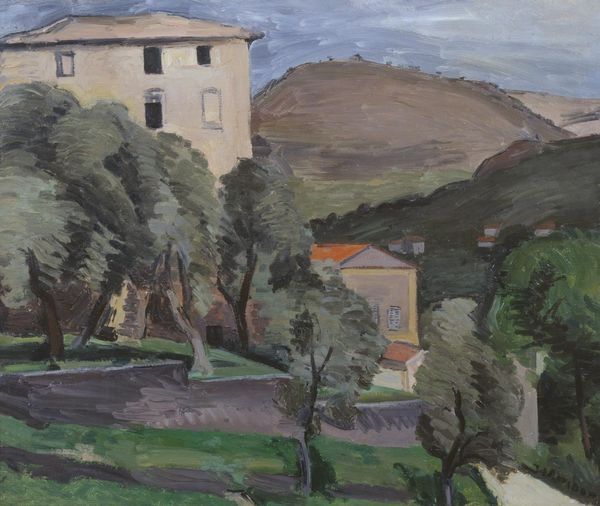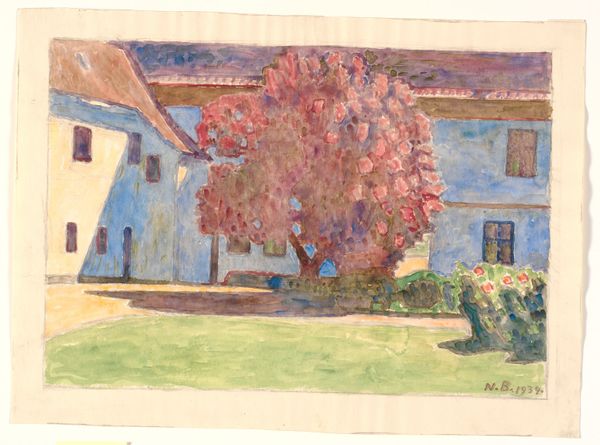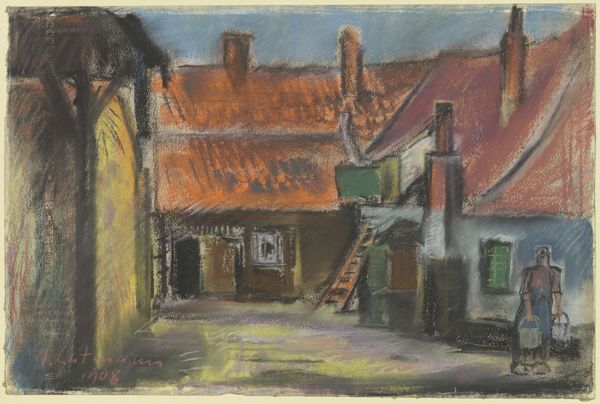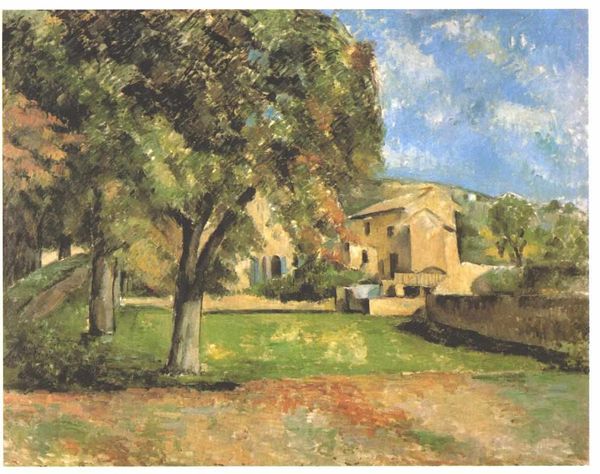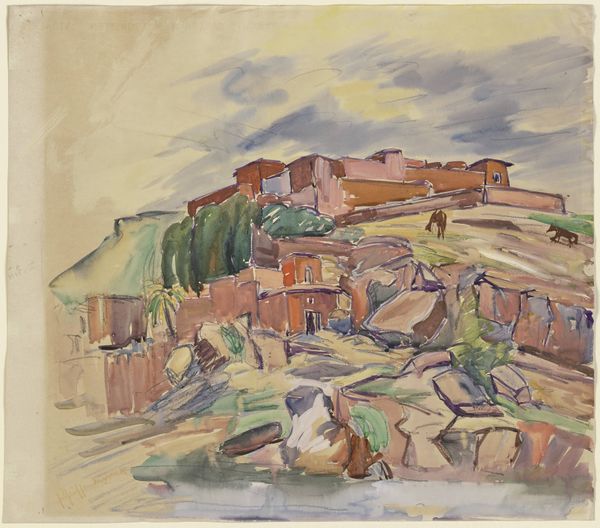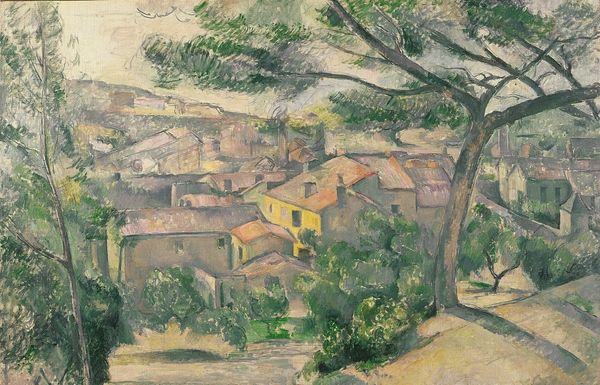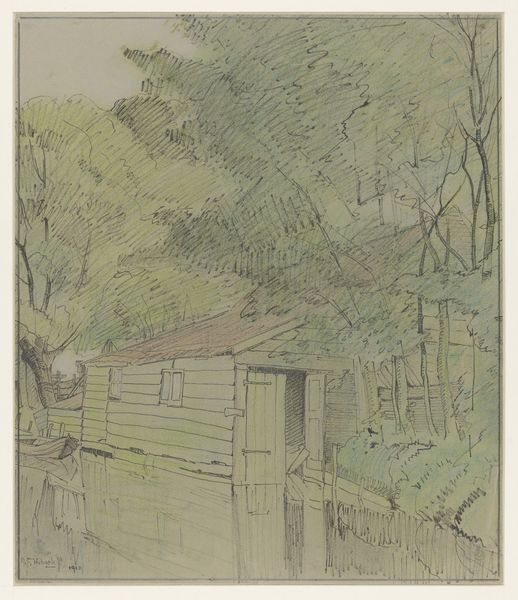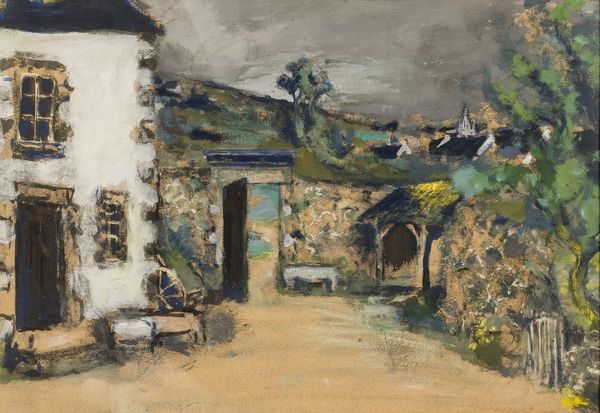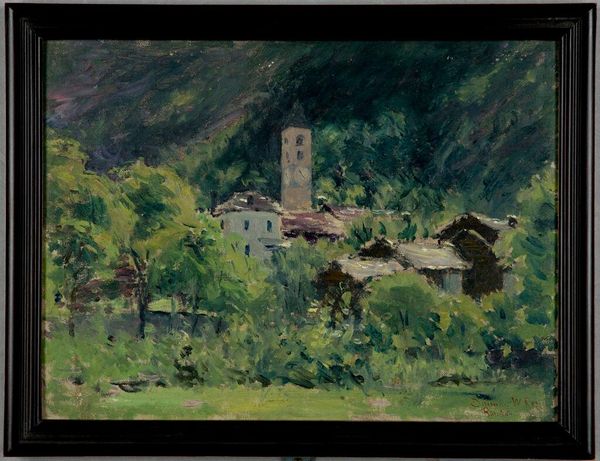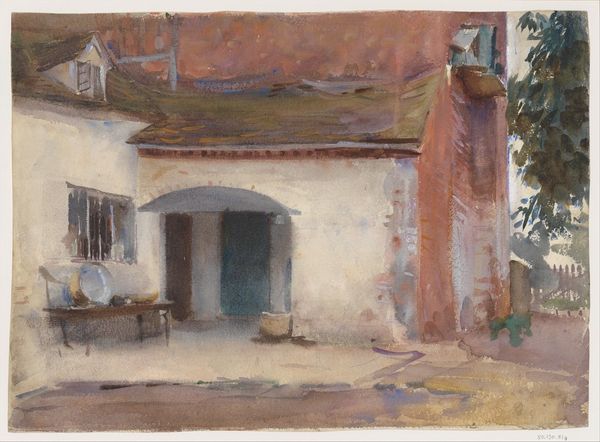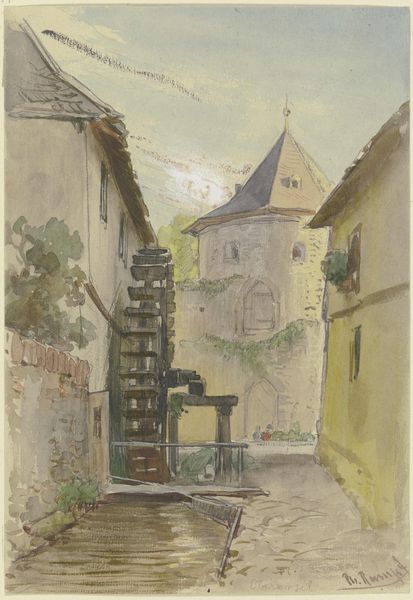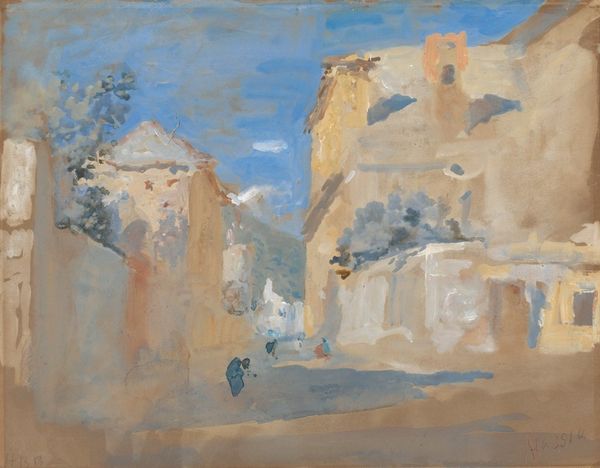
Copyright: Public Domain
Curator: Good morning. I’d like to introduce Andreas Bernhard Söhngen’s "Church in Bad Orb," a compelling drawing dating to February 1912. It’s a striking piece currently housed here at the Städel Museum. What are your first thoughts? Editor: Immediately, I’m struck by the somber, almost spectral mood. It feels like a memory, softened by time and light. The palette is muted, the composition grounded, the presence of nature offers that grounding. It is if nature and time play a leading part in life. Curator: It’s interesting you pick up on that. Söhngen created this artwork en plein air. At the time, there was growing artistic interest in the landscape and what a modern city might look like. But in painting places, even in the impressionist style, Söhngen was painting time, place, society in motion, just by his composition. Editor: And there’s that figure, standing in the shadow of the church. It’s like a silent observer, adding to the atmosphere of contemplation and introspection. He looks like waiting for the present. Is the door about to open for them, or has the door of time brought them here? Curator: Perhaps. We should remember, however, that these drawings and painting like "Church in Bad Orb" came in a turbulent historical period in Europe, rife with social change and anxiety that rippled throughout its politics, class structures, and national boundaries. Art has to be understood through the lense of the viewer, even 100 years later. Editor: Absolutely. And this drawing invites exactly that, doesn’t it? I mean, even though I knew nothing about this context of his drawings, Söhngen gives you the sense of walking in to the drawing's time frame. The fact that it’s a gouache painting almost amplifies its power to welcome imagination, emotion, empathy and humaneness. Curator: It’s fascinating how we can perceive art in ways unintended, maybe, by its creator. His works show you about society at the turn of a century. Editor: Indeed. It also holds an emotional depth for what the place once was for its community and what could be. So I invite you, next time when you are strolling a historic place like Bad Orb to remember to stop to watch at the door: the new doors we have, how do they reflect old days, our imagination and hope? Curator: Well said. A final thought that highlights both art as it comes to shape and reflects who we are today!
Comments
No comments
Be the first to comment and join the conversation on the ultimate creative platform.
